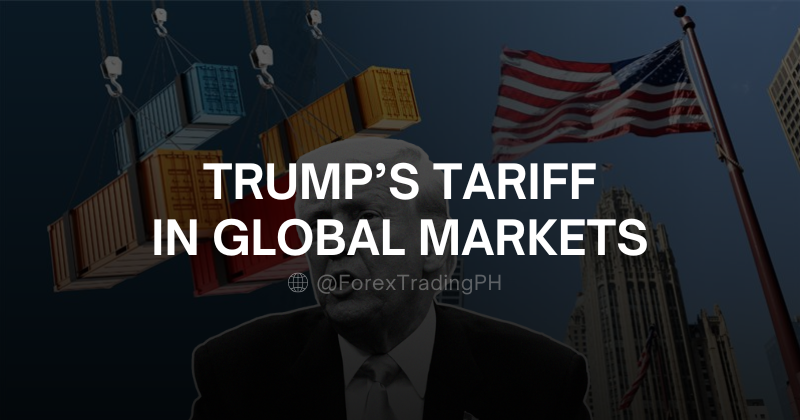
Trump's Tariff in Global Markets
The U.S. dollar sank against major peers on Thursday, dropping to six-month lows against the euro, and the safe haven yen and Swiss franc, as investors grappled with how U.S. President Donald Trump’s far-reaching tariffs will impact global trade and economic growth.
The basics: A tariff is a tax on imported goods. When a ship full of bananas or T-shirts or Toyotas arrives at a U.S. port, part of the paperwork for crossing the border is paying the applicable tariff, also known as an import duty.
Trump said he would impose a 10% baseline tariff on all imports to the United States and higher duties on some of the country’s biggest trading partners.
“What the FX market is telling you, (is) that U.S. growth is going to suffer, and that U.S.-built systems are falling apart in global trade,” said Adam Button, chief currency analyst, ForexLive.
“The U.S. dollar was the most crowded trade in the world coming into the year. And today, the knee-jerk reaction to tariffs is to sell everything. Any trade that was crowded is thinning out, and that includes the dollar.”
Correlation Between Tariffs and Forex Rates
Tariffs affect trade flows across nations, which, in turn, impacts the demand for a currency. Historically, a positive trade balance results in heightened demand for the domestic currency. However, with increased tariffs, imports decline. This may adversely impact the exporting country’s GDP and lower the demand for its currency. A decline in demand for a foreign currency supports the domestic currency. Notably, retaliatory tariffs, as threatened by America’s neighbors, potentially counterbalance the impact on both currencies involved.
Goods imported from dozens of countries and territories are now going to be taxed at sharply higher rates, and that is expected to drive up the costs of everything from cars to clothes to computers.
These tariffs – which can run as high as 50% — are meant to punish countries for trade barriers that Trump says unfairly limit U.S. exports and cause it to run huge trade deficits.
Investors are worried that some U.S. trading partners could retaliate with measures of their own, leading to higher prices.
Gold (XAU) price extended its losses on Friday and plunged to a seven-day low of $3,015 before recovering some ground, following a speech by Federal Reserve (Fed) Chair Jerome Powell, which indicated that inflation could reaccelerate due to tariffs. Powell also commented that monetary policy is appropriate as they wait for clarity before considering interest rate adjustments.
Disclaimer:
All data, information and materials are published and provided “as is” solely for informational purposes only and does not constitute investment advice. Learn how to trade Forex today. Join our FREE Forex Trading seminar and be part of our growing trading economy!
